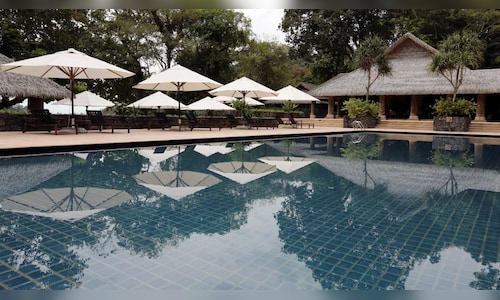The luxury hospitality sector in India is rethinking its risk management approaches as conventional insurance policies no longer adequately cover the diverse risks encountered by upscale resorts. With growing reliance on digital infrastructure, escalating climate uncertainties, and complex guest services, many luxury hotels are embracing customized insurance solutions designed to meet their specific operational and regional needs.
A gap in coverage was highlighted by a recent report from Policybazaar for Business. Amitabh Dewan, Head of Large Risks at Policybazaar for Business, stated in an interview with CNBC-TV18, “Insurers are now transitioning from standard policies to developing modular plans based on real-world operational exposures.”
Hotels embrace modular and location-specific coverage
For resorts situated in environmentally sensitive areas, the transition to customized insurance solutions is already in progress.
At MAYFAIR Spring Valley Resort in Guwahati, which often deals with heavy monsoon rainfall, insurance is closely aligned with seasonal risks.
“We view insurance as a dynamic tool—it adapts alongside the property,” stated J P Gautam, GM – Corporate Finance at Mayfair Elixir. “We collaborate with insurers to incorporate weather-related risks, frequency of events, and even visitor patterns.”
The resort’s design, drawing from Assamese heritage and monastic influences, features handcrafted murals and antique artifacts that necessitate non-standard valuation and coverage.
“These elements are more than just decor; they contribute to the brand’s narrative and guest experience. We ensure they are comprehensively insured, not just for their financial value, but for their significance,” Gautam noted.
Design and geography shape insurance strategies
At Ananta Hotels & Resorts, insurance strategies are integrated with design, landscape, and guest experience offerings.
“No two Ananta resorts are identical. Our insurance approach reflects this diversity,” remarked Mohit Goyal, Director at Ananta Hotels & Resorts. “We don’t merely insure structures; we protect guest experiences—from lagoon-facing spas to open-air banquets emphasizing local materials like bamboo and sandstone.”
“We have also collaborated with insurers to create coverages that align with our eco-friendly designs, encompassing heritage conservation and green building insurance,” he added.
Insurance coverage is evolving
Modern luxury hospitality operations now encompass a range of risk categories. Beyond core elements such as property and fire protection, new coverage options include:
- Cybersecurity insurance covering data breaches and system failures
- Event cancellation coverage for major weddings or corporate gatherings
- Business interruption insurance to address revenue loss and reputational damage
- Specialized art and heritage insurance for unique interiors and cultural assets
- Liability coverage for injuries, fire safety compliance, and vendor disputes
“Standard policies may cover the building and furnishings, but they often overlook the experience itself. That’s where we notice a significant demand for modular solutions,” Dewan explained.
He mentioned that many luxury establishments are now selecting event-specific insurance with tailored liability clauses. “A wedding cancellation due to adverse weather, or a technical malfunction during a global investor summit, can entail substantial costs. These are tangible risks for luxury hotels that are now being addressed in underwriting decisions,” he stated.
Pandemic and technological advancements drive coverage innovation
The COVID-19 pandemic has also accelerated the expansion of insurance offerings. Insurers have become more amenable to providing coverage for hygiene-related claims, operational disruptions, and digital system failures.
“Digital advancements have altered the risk landscape for hospitality,” Dewan noted. “Many hotels utilize advanced software for bookings, payments, and guest profiling but lack comprehensive cyber coverage. This gap is now being bridged with new policy modules.”
Incentives for sustainable initiatives are also emerging. “Properties that invest in solar energy or obtain green building certifications could qualify for more favorable premium rates. It’s mutually beneficial for brands and insurers,” he added.
Industry outlook: From protection to collaboration
The prevailing sentiment in the industry is shifting—from viewing insurance as a cost to recognizing it as a partnership.
“Insurers today are seen as partners in ensuring business continuity,” commented Gautam from Mayfair. “We seek more than just protection; we want a thorough understanding of our needs. Someone who recognizes that a damaged mural may cost ₹10,000 to fix, but that downtime during peak season could incur a loss of ₹10 lakh.”
Goyal added, “We now hold regular strategy discussions with our insurance advisors. As we expand into new regions, each location introduces distinct risks. Without flexible coverage, responsible growth is unattainable.”
ALSO READ | Mahindra Holidays to add 850 rooms in FY26, aims to achieve 10,000-room target by 2030



